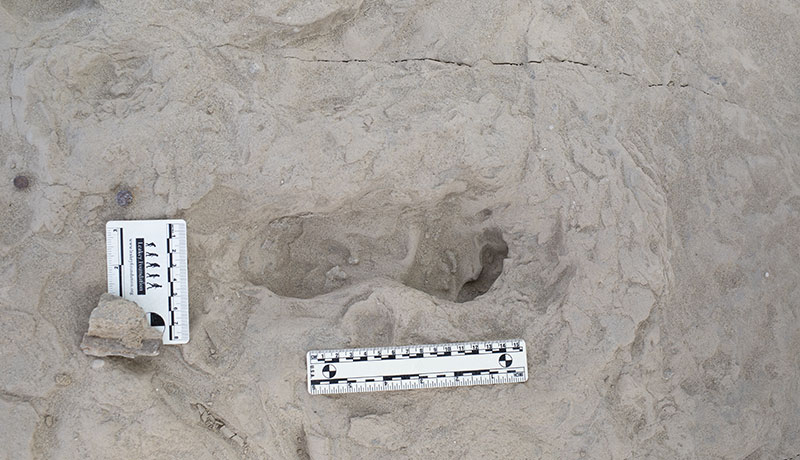Nov 29. () –
New fossil footprints prove that at least two species of hominids They were walking along the muddy edge of a lake in the Turkana Basinin Kenya, at the same time, 1.5 million years ago.
“Their presence on the same surface, at a close time, places the two species on the margin of the lake, using the same habitat,” he comments. in a statement Craig Feibel, co-author of the study and professor in the Department of Anthropology at Rutgers University. The finding is published in the journal Science.
Feibel, who has conducted research since 1981 in that area of northern Kenya, a fossil-rich site, applied his expertise in stratigraphy and dating to demonstrate the geological age of the fossils, which dates back to 1.5 million years. He also interpreted the sedimentary context of the surface of the footprints, reducing the time it takes to pass fingerprints to a few hours and demonstrating that they were formed in the same place of soft sediments where they were found.
The discovery at the famous Koobi Fora hominid fossil site, also described by Kevin Hatala, first author of the study and associate professor of biology at Chatham University in Pittsburgh, Pennsylvania (United States), provides physical evidence of the coexistence of multiple hominid lineages in the region, something that it had only previously been inferred from overlapping dates for scattered fossils.
Based on information about gait and posture obtained from the tracks, researchers believe that the two species were Homo erectus and Paranthropus boisei . This is the first evidence of two different patterns of bipedalism among Pleistocene hominids appearing on the same footprint surface.
After examining the new Koobi Fora tracks, the researchers analyzed other hominid tracks of similar age and concluded that There is a distinct pattern of two different types of bipedalism throughout the Eastern Turkana region.
The general analysis indicates that different species simultaneously used these lake habitats, with different possibilities of competition or niche distribution that could have influenced the trends of human evolution.











![[Img #74674]](https://thelatestnews.world/wp-content/uploads/2024/12/Santiago-Ramon-y-Cajal-The-promoter-of-modern-neuroscience-300x200.jpg)

Add Comment